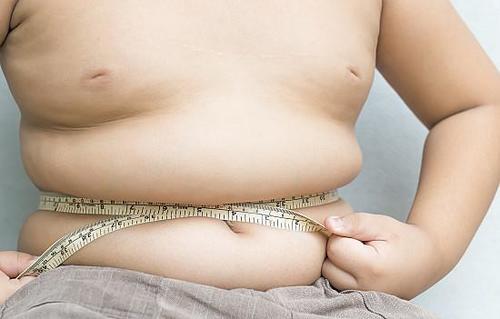
Posted on 01/04/2022 8:10:32 AM PST by SeekAndFind
One of the only silver linings of the pandemic has been that young people are less affected by COVID-19 than the elderly. In fact, the most vital indicator of negative COVID-19 outcomes is age: Unlike the Spanish flu, which ravaged armies that were overwhelmingly comprised of otherwise healthy young people during World War I, COVID-19's death toll is dramatically skewed toward those who have already lived many years. (For context, the average age of death from Spanish flu was 28.)
That said, about 600 Americans under the age of 18 have died of COVID-19 during the pandemic. A new study from the Centers for Disease Control and Prevention (CDC) took a closer look at young people who were hospitalized for COVID-19 in July and August, while the delta variant wave took hold, and largely found that healthy young people continue to mostly evade the worst of COVID-19.
The study found that most young people who suffer severe COVID-19 outcomes had underlying health conditions. The most common, especially for teenagers, was obesity.
"Among patients aged 12–17 years, 61.4 percent had obesity," according to the study, "60.5 percent of whom had severe obesity."
The study looked at six U.S. hospitals—all of them in the American South—and evaluated 915 cases of COVID-19 in adolescents that required hospitalization. The vast majority were hospitalized for COVID-19, though some had other infections as well. Of the 713 patients who were primarily hospitalized for COVID-19, two-thirds had at least one underlying health condition. For the teenage cohort—patients at least 12 years of age—the obesity rate was 61.4 percent. The severe obesity rate was 60.5 percent. Just one of the eligible patients had been vaccinated, and 11 patients died in total.
What this means, of course, is that COVID-19 can be a fatal disease, even for young people - but vaccine status and general health are extremely important variables. It remains the case that healthy children who do not have underlying health conditions—particularly obesity—are by and large safe from negative COVID-19 health outcomes.
"Compared with patients without obesity, those with obesity required higher levels and longer duration of care," wrote the study's authors.
"These findings are consistent with previous reports and highlight the importance of obesity and other medical conditions as risk factors for severe COVID-19 in children and adolescents."
One of the best ways to guard against obesity is to encourage healthy eating and active lifestyles among the youth population. Exercise is not a panacea, but kids who play sports or engage in physical activity are less likely to become obese. Physically active kids tend to have better diets than those who stay indoors all day, glued to their screens.
It's important to perform this reality check—the more healthy and active kids are, the less COVID-19 threatens them—given just how much the lives of young people were upended by pandemic mitigation efforts. In the name of slowing COVID-19's spread, public health authorities closed schools, shuttered extracurricular activities, and instructed young people to remain by themselves, indoors. Even benign activities like playing at the park were discouraged for the first few months of the pandemic. And while many activities have resumed, some college campuses (for instance) would rather their student populations quit sports than dare to do them unmasked.
Those who have rule-making power over young people would be well-advised to consider whether the purported cure is worse than the disease—and whether it actually makes the disease more dangerous for some. Young people need socialization and activity. They need a reason to put down their smartphones and venture out into the world. It is not in the interests of public health to keep them shut up in their bedrooms and dormitories for long periods of time.
As the super infectious—though seemingly more mild—omicron variant threatens to force public health officials to re-implement stringent mitigation measures, that's worth keeping in mind.
Does it matter if the article is about vaccines or not?
Anti-vaxxers see vaccines in their shadow.
That is not only helping me keep the weight under control, but my energy levels are great, no balance issues at all, and have gained upper body muscles. Will soon burn 82 candles. Nothing beats daily exercise, not food, not prescriptions, not nutritional supplements.
https://www.youtube.com/watch?v=I55ZxIwbuOU
I would like to know what the other factors were. 40 percent of the dead were from co-morbidities other than obesity.
I do agree that daily exercise is worth its weight in gold. It’s not just eating and how much. Our daily exercise helps us too, even when we do indulge in “fine” dining.
IIRC, carrying a bit of fat is associated with greater lifespan. So is a total cholesterol above 200. We see lots of advice based on "heart attacks" for example, but there are a lot of ways to die. All cause mortality curves are usually U shaped, and the sweet spot rarely lines up with an individual cause. For example, as cholesterol goes down, cancer starts to increase. Blood pressure goes down in older folks and mortality from falls goes up.
I'm pretty sure neither very lean nor very fat makes for good health.
"We have seen him go from a trim athletic build, to very round."
Weight lifting is a positive, but weight lifting as a substitute for everything else is not. I've known some enormously strong guys who were also very fat...and with significant heart problems in their 40s.
Jack Dempsey in his prime:

Wouldn't qualify for an action star in Hollywood but I'd have hated facing him in a ring! My only hope would be to outrun him...;>)
Whatever the healthiest part of the u shaped weight curve is, the bmi category of a healthy weight should center on it rather than mislabel it as overweight. Better yet a system which is adaptive to basic build should be developed to give us better stats. As it stands the go to measure seems both reckless in individual accuracy as well as not even being accurate on average.
Interestingly, my daughter’s boyfriend is in to mixed martial arts. If only he looked like Dempsey, I wouldn’t worry. That’s what he used to look like (my guess would be) 35-40 pounds ago. CoVid hasn’t been kind to him, and I am concerned about his weight gain. I think my daughter is, too, and she asks me about my weight loss from time to time. I think she wants to encourage her boyfriend, but I think he’s being stubborn. Nobody likes to be told what to do. He will have to decide for himself.
Another example of where BMI is silly. This is me:
“Height: 5 feet, 7.5 inches
Weight: 155 pounds
Your BMI is 23.9, indicating your weight is in the Healthy category for adults of your height.
For your height, a healthy weight range would be from 120 to 161 pounds.”
In reality, I’d be a lean fighting machine at 145. At 120, I’d be dangerously underweight. And gaining 7 lbs would still leave me able to run 4 miles a day in my 60s and far from obese.
But then, BMI doesn’t account for male/female! I’ll grant a lot of 5’8” women who weigh 165 would be too fat...but the flip side is almost no male my height should weigh 120!
The fact that BMI doesn’t distinguish between male and female is proof it is at best a statistical tool for population studies. At best. And you are right. It could easily be adjusted to make it more realistic.
Disclaimer: Opinions posted on Free Republic are those of the individual posters and do not necessarily represent the opinion of Free Republic or its management. All materials posted herein are protected by copyright law and the exemption for fair use of copyrighted works.